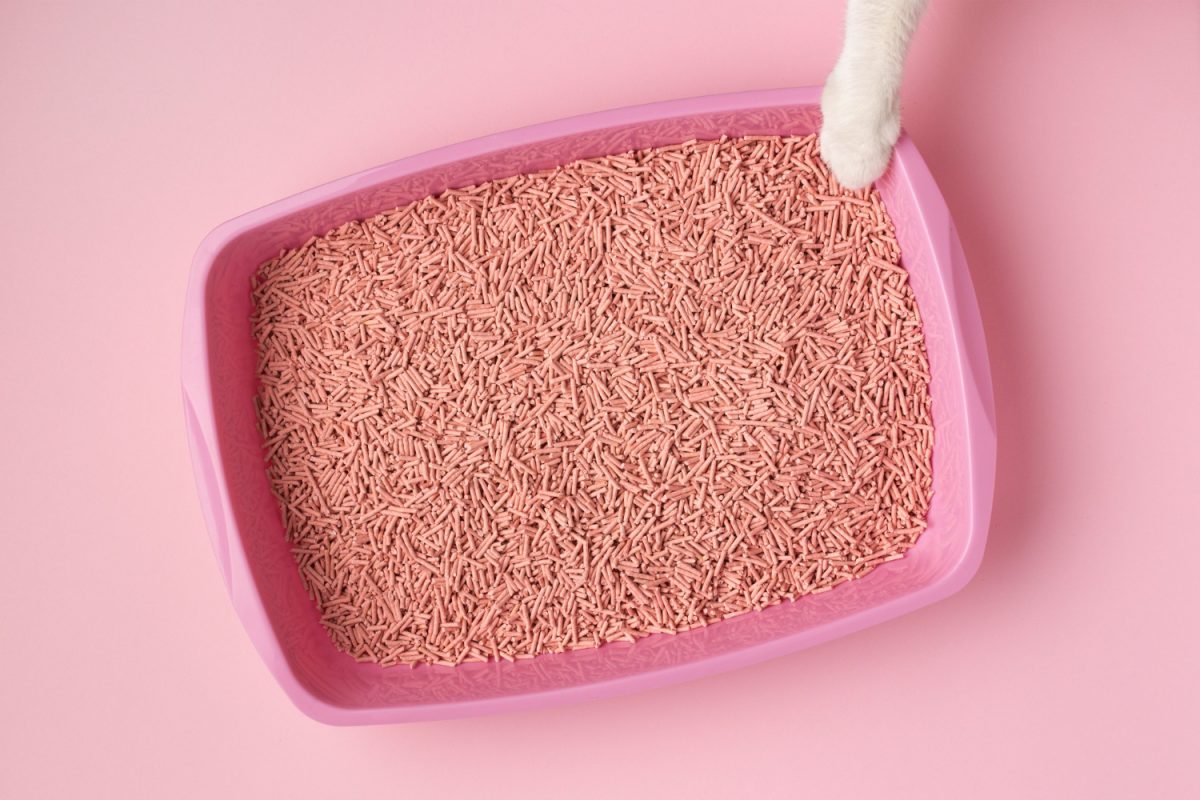
Litter Box Basics: How to Choose the Best Litter Box for Your Cat
10 Feb 2023.
When preparing your home for a new kitty one of the main must-haves is a litter box. However, with so many options available, it can be hard to know which litter box to choose for your cat. It’s important to give this decision a lot of thought so you choose a litter box your cat feels comfortable with. Not to worry, we’re here to help! Below, Cat in a Flat breaks down everything you need to know about your furry friend’s bathroom.
Table of contents
How many litter boxes does my cat need?
First, you need to decide how many toilets your furry friend (or friends) need. The general rule is one litter box per cat, plus one more. So, even if you are a one-cat household, you shouldn’t just have a single litter box. Your cat should have access to two litter boxes. And if you have two cats there should be a litter box per cat, plus one more (three in total).
If you have too few litter boxes around the home this can create issues for your kitty. Mr Whiskers may start protest pissing outside their litter box or acting aggressive if they feel they don’t have enough places to poo or pee. Cats are also territorial, which is why multiple litter boxes are a must in a household with more than one feline. This is especially important when introducing a new cat into the home. You want all your fur friends to feel like they have enough personal space!

The best types of litter boxes for your cat
Breed, personality, health, and age all play a part in which litter box you choose for your cat. Here are some things to consider when choosing your cat’s litter box:
- Best litter box size — Certain breeds (like Maine Coon cats) are larger than others, and the size of your feline’s litter box should vary accordingly. Your kitty’s litter box should be around 1 ½ times the length of your feline from their nose to the base of their tail. It should be large enough for your cat to be able to turn around inside (particularly when they are burying their poo or pee).
- Best litter box for kickers — If your kitty sprays, likes kicking up litter, or just generally has bad aim, you may consider getting an enclosed litter box. However, if your cat doesn’t like enclosed litter boxes, you can simply choose a litter box that has high walls on three sides and a lower entry/exit side at one end.
- Best litter box for kittens or elderly cats — If you have a young kitten or an older cat with mobility issues, you’ll want to choose a litter box with lower sides for easy entry. Typically, an entry/exit side that is around 2 ½ – 3 ½ inches high should work.
How to choose between covered and uncovered litter boxes
If you’re wondering whether covered or uncovered litter boxes are better, rest assured that there is no right or wrong answer. Each cat is different and what works for one kitty might not work for another. One way to find out is by giving your cat a couple litter box options to choose from. You’ll be able to tell pretty quickly which one your fur friend prefers because that will be the one they use the most!
If you’ve chosen a litter box your cat doesn’t like, don’t toss it. Donate it instead! There are many cat charities that welcome donations such as litter boxes, pet beds, and toys for the kitties they look after.
Note: If you do choose an enclosed or covered litter box, make sure that the opening isn’t too small or too difficult for your furry friend to get through.

Where should I put my cat’s litter box?
Hopefully, you’ll have enough space in your home for multiple litter boxes. Here are a few tips on where to place your cat’s litter box:
- Avoid busy areas of the home. Cats prefer quiet, private places for their bathrooms.
- Avoid the middle of a room. Our kitties may be domesticated, but they still possess some instincts from their wilder ancestors. If the litter box is in the centre of the room, your cat may feel too vulnerable to use it. This is because it’s impossible for Mr Whiskers to watch for predators from all angles. Place the litter box in a corner or behind a door so your feline feels safe.
- Avoid proximity. If you have space for multiple litter boxes, don’t place them right next to each other or even in the same room. Space them out throughout the house. If you have multiple levels in your home, place a litter box on each floor.
- Avoid food and water dishes. Would you like to have your toilet right in the middle of your dining room? Your cat wouldn’t either! Our kitties are fastidiously clean creatures, so avoid placing Mr Whiskers’ bathroom too close to the food and water dishes.
What type of litter should I use?
There are many types of litter available. Like with choosing a litter box, deciding on a type of litter will depend on what your unique furry friend prefers. Here are some options to choose from:
- Biodegradable litter — This is often considered the best choice as it’s both safe for cats and the environment. These are made from plant-based materials such as corn cobs, pine pellets, straw, or paper. You can find both clumping and non-clumping options and some can be flushed down the toilet or used as compost.
- Silica litter — Silica is a naturally occurring mineral and one of the best odour-absorbing litter types on the market. It’s also very absorbent, leads to less tracking, and is hypoallergenic. However, silica litter is not biodegradable and therefore not very eco-friendly.
- Clay litter — This is probably the most popular type of litter. It’s usually easy to find and more inexpensive than other kinds. However, clay litter is less absorbent than some other options. It can also be less hygienic as it gives off a fair amount of dust particles whenever your cat kicks up litter or you clean the litter box.
- Health litter — Cats can be prone to urinary issues like cystitis, especially as they grow older or if they’re overweight. This litter is supposed to change colours when it detects ph changes or urinary tract infections in your kitty’s pee. However, as it’s still a relatively new concept on the market, it’s still too soon to tell how well it works or what the cons are.
How to maintain your cat’s litter box
Litter box maintenance will be a part of your day-to-day for the length of your kitty’s life, so cleaning it should be a daily routine. Make sure to scoop out and dispose of poo or pee at least once a day, twice if possible. Once a week you’ll want to dump out the entire contents of the litter box, wash it with hot water and detergent, then fill it with fresh litter. When adding litter always aim for a depth of around 2 – 3 inches. If you put too little litter in your kitty’s box, they may struggle to bury their faeces. Too much, and Mr Whiskers may have trouble moving around.
Note: If you you’re hiring a cat sitter to look after your feline while you’re away on a trip, make sure to walk them through your kitty’s toilet routine before you leave. Never assume that your cat sitter will know what to do or how to maintain your fur friend’s litter tray. Scooping out the litter box should be one of your cat sitter’s regular daily tasks, but some sitters will do extra chores (such as completely clean out the litter box) if asked. Be sure to discuss with your cat sitter beforehand what extra services they can or can’t provide.
Want to know more about how to give your kitty the best care? Check out our safety tips for first-time cat parents and our recommendations for the best cat scratching trees for your feline.
- #catinaflat
- #pet care
- Cat Care
- cat litter box
- choosing cat litter box


